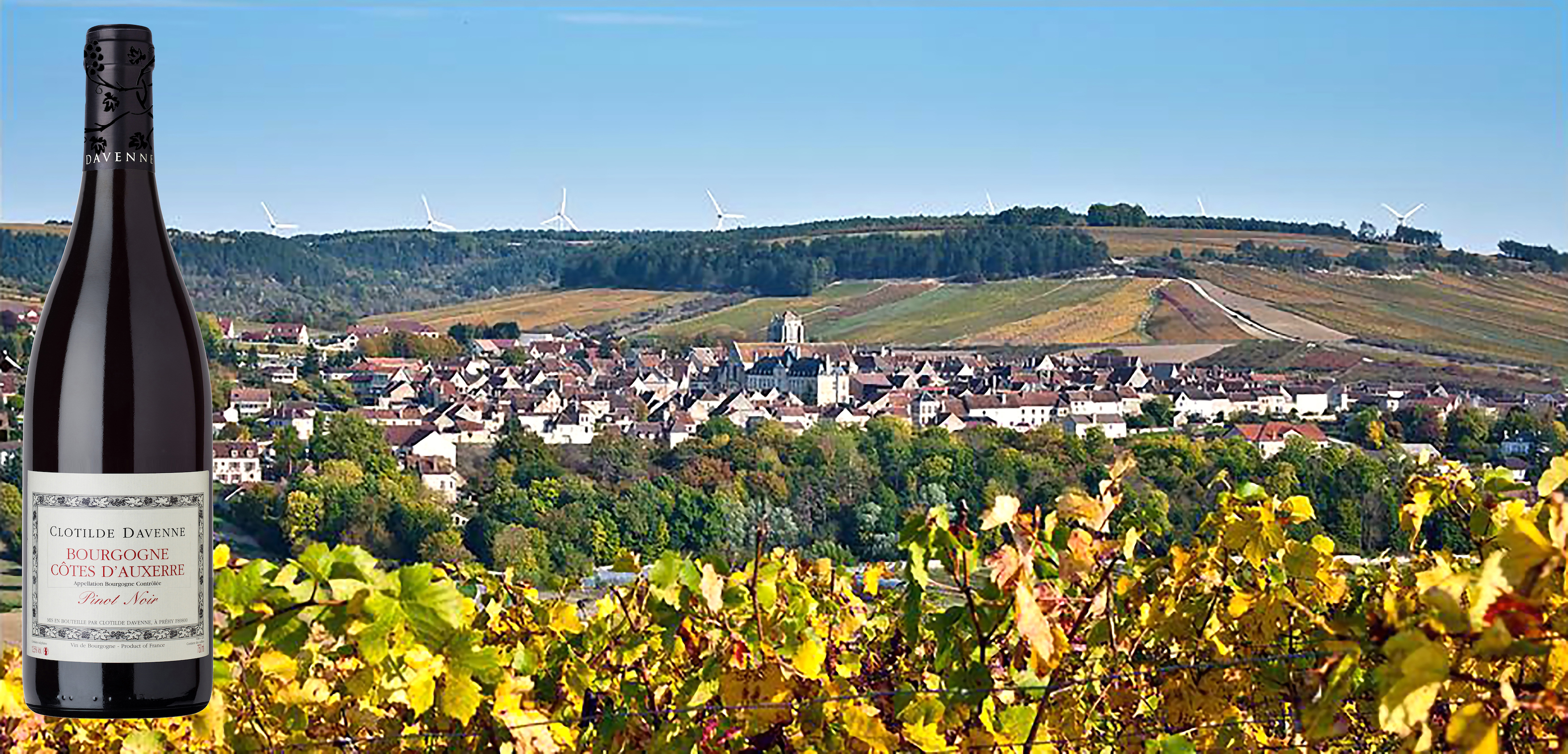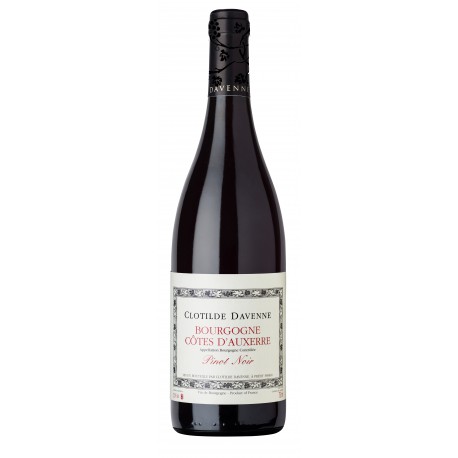- Français
- English
Bourgogne Rouge Pinot Noir
Côtes d'Auxerre Rouge

An intense ruby colour and a nose of cherries and strawberries with hints of black pepper underpinned by mineral notes. A silken wine with discreet tannins. Liquorice accompanies cherries and wild strawberries when tasting balanced and a good example of the wines of this terroir.
Detailed description
The Auxerre vineyards (pronounced “Ausserre”), lying on either side of the river Yonne, boast ancient lineage, thanks to the abbey of Saint-Germain and a proximity to Paris.

Today they are very much alive. In 1993, wines from the communes of Auxerre, Vaux, Champs-sur-Yonne, Augy, Quenne, Saint-Brisle- Vineux and Vincelottes were granted the right to add a local identifier to the appellation Régionale Bourgogne.
In any case, these vineyards continue to have their own distinct personality.

These vineyards form part of Bourgogne’s “golden gate”, lying as they do on Jurassic limestones (Kimmeridgian and Portlandian).
Appellation Régionale of the Auxerrois region (Yonne).
The name CÔTES D’AUXERRE can only be added to the word BOURGOGNE for red, white and rosé wines produced within the defined area of the appellation.

An intense ruby colour and a nose of cherries and strawberries with hints of black pepper underpinned by mineral notes. A silken wine with discreet tannins. Liquorice accompanies cherries and wild strawberries when tasting balanced and a good example of the wines of this terroir.
Serve with roasts, barbeques, paella and cheese.
Data sheet
| Delivery | Free delivery in mainland France for orders of 6 bottles and multiples of 6, mixing possible. Outside of France, the most advantageous price is calculated for packaging of 6 and multiples of 6. | |
| A.O.C controlled designation of origin | Regional appellation from the Auxerrois vinyard, Yonne region, Northern Burgundy The name Bourgogne Côtes d'Auxerre can only be used for white, rosés or red wines produced within the limits of the appellation | |
| Grape variety | 100 % Pinot Black | |
| Terroir | Limestone kimméridgien and Portlandien. | |
| Vineyard | The vines are facing South on the village of Saint-Bris-le-Vineux. They are 50 years old | |
| Lieu-dit | Les Rosiers | |
| Vines | Pinot noir grapes, planted in the 70'sP | |
| Exposure | South | |
| Vine growing | High Environmental Value | |
| Harvest | The grapes are harvested when they reach the optimal maturity. They are then sorted, and 50 to 100% destemmed following the years | |
| Winemaking | Maceration with punching to extract the color while preserving the fruit. | |
| Breeding | One third of the cuvée is raised in old wooden barrels before re-blending, filtration and bottling. | |
| Aging | Drink now and for 3 to 5 years. | |
| Service | Serve between 15 and 17 ° C chambered. | |
| Aspect | An intense ruby colour | |
| Nose | Nose of cherries and strawberries with hints of black pepper underpinned by mineral notes. | |
| Mouth | A silken wine with discreet tannins. Liquorice accompanies cherries and wild strawberries when tasting balanced and a good example of the wines of this terroir. | |
| Accords | Serve with roasts, barbeques, paella and cheese. | |
| Tasting | The wine is fresh and fruity, developing aromas of Pinot Black: red berries and cherries dominating mineral notes of white soil. | |
| Christy Canterbury Master of wines | 87/100 | |
| Millésime 2009 | Burgondia Bronze Medal 2017 | |
| Gilbert & Gaillard | Robe rouge clair. Nez épanoui de petits fruits rouges soulignés d'une touche pierre à fusil. En bouche une belle attaque fraîche, fruitée, avec de la sève et toujours cette plaisante dimension minérale. | |
| Tim Atkin Master of Wine | 89/100 | |
| Burgondia de Bronze | Bronze medal 2017 |
My wines speak of their land gracefully across the fruit of each grape variety.










